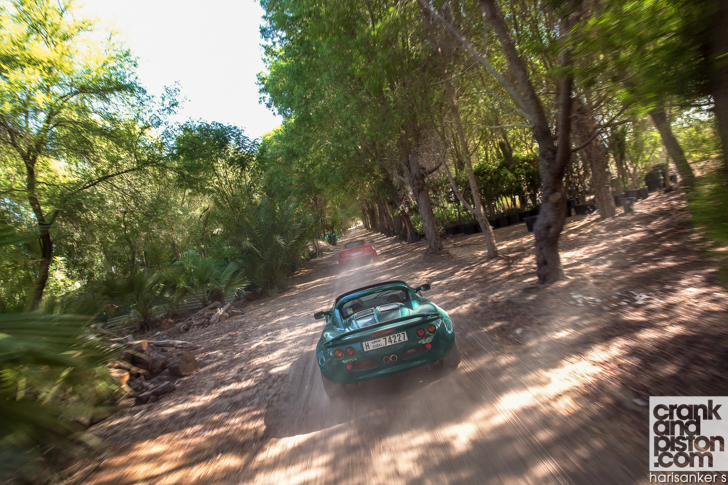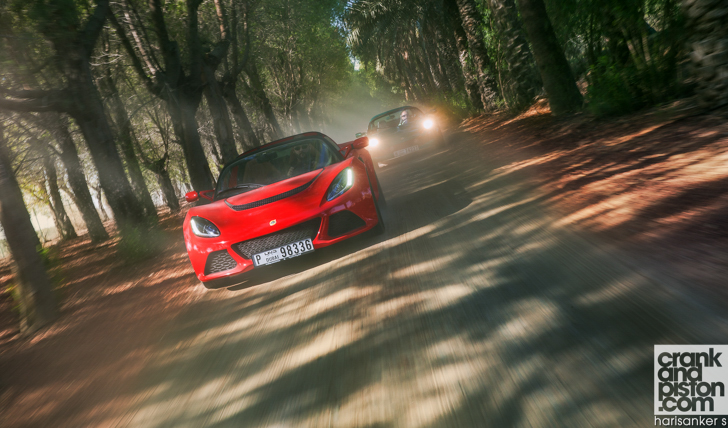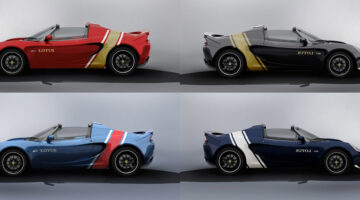The first series Elise changed the game for Lotus at a time when its star was in the decline. More than 15 years later, with the Exige S, its lineage can still be found.
Can you remember a time before social media or a device beginning with ‘i’? With technology and expectations moving ever faster, it’s all too easy to take technology’s lineage for granted. Take the Lotus duo you see above for instance: separated by 15 years, the difference in design between our ’99 Racing Green Elise 111S and ’14 Ardent Red Exige S Roadster alone is pretty striking. Appearances though can be deceptive. Peer beneath the bodywork and you’ll find underpinning on both that – quite remarkably – date back to 1952 and the birth of Lotus.
Colin Chapman started building racing cars for a sole purpose: to win. Post-war Britain meant money was in short supply, but certainly not ideas: it’s what Chapman did with basic materials that got his innovative designs noticed. Local club races soon progressed to international championships, and Lotus ultimately went on to win almost everything it entered, including the prestigious Indianapolis 500 at its first attempt in 1963 and even rallying, a Lotus-badged Sunbeam taking the World Rally Championship for Talbot in 1981. Over a 15-year period the company bagged seven Formula 1 Constructors Championships (including six Driver’s titles) and became the first team in F1 to score 50 Grand Prix victories, the Lotus road car division footing the bills throughout. Not bad for a British privateer Enzo Ferrari referred to as ‘garagistas’.
Even after Chapman’s premature death, the innovation continued despite corporate turmoil. Up to the mid-1990s, most road cars – as they had been for most of the century – had been made from steel welded together. The boffins at Lotus Engineering however had other ideas, experimenting with extruded alloy sections bonded together to form a chassis for the purposes of greater stability and, more importantly, significant weight saving. It was through this that the Series 1 Elise was born as a mobile test-bed, but so focused was Lotus on its new bonded chassis technology that it completely underestimated demand of the Elise, original production numbers of 600 rocketing to 3000 – per year – as petrolheads grew fascinated with this ‘back-to-basics’ roadster.

A decade later it was déjà vu. With an ageing product range, Lotus needed a new car and fast. Unlike its previous models, Lotus’ new 2+2 Coupe – the Evora – needed more than a chainsaw four- pot to achieve GT status, and was thus fitted with a 3.5-litre V6.
Huh…big engine, small car. It seemed a formula worth pursuing and soon Lotus’ range – acting effectively as prototype mules – was fitted with V6 engines. Inexplicably, it still took Lotus four years to put the Exige – it’s best-selling model today – into production. Complete with bonded alloy chassis tub that made its debut with the sister Elise more than a decade earlier.
Like I said, appearances can be deceptive. But how does this racing history and tech talk translate to the road? Let’s start with a quick spin in the Elise 111S.
Two things strike when walking towards the Series 1, namely its petite size and all those curves: there isn’t a straight-line to be found (hardly surprising that inspiration for the design came from a Dino 246). There are no door handles as such, just a rubber grommet you curl your finger tips around to gain access. Getting in with the hood off is fairly simple since you just jump-in beach buggy style. Sitting just above the tarmac, your eyes pan around the cabin and the starkness begins to dawn on you. There is no radio, sun visors, carpet, or even air bags. The only concession to comfort is the driver’s seat lumber support courtesy of a large bulb filled with air connected to the bolsters that you squeeze to inflate. Even the passenger has to bring his or her own cushion.

On start-up you can feel the vibration of the engine, hear the noise from the fuel pump, the clunk of the gears. Even when new the Elise felt retro, and it’s no wonder Lotus thought they’d only sell a couple of hundred. The true genius however lay with the drive.
The combination of slippery curves and an almost impossibly small 770kg kerb weight means every one of the 1.8-litre four-cylinder’s 143bhp contributes to a feeling of zero inertia. There’s nothing retro about 0-100kph in 5.4 seconds nor the way it rides or handles with typical Lotus magic. For sure, it’s the steering feel that elevates the Elise to superstar status. Turn-in feels pin sharp and every surface detail is transmitted through your fingers, just like a racing kart for the road.
In daily use, you start to see a few areas where the Elise shows its age. High-speed wind noise means even if a radio were fitted, it would be inaudible. The brakes lack both servo assistance and anti lock, although they prove effective enough once you get your eye in. But by far, it’s the soft-top hood that could send even the most patient of saints over the edge, Lotus seemingly using every combination of clip, stud, bar and rail to secure a simple piece of canvas. Even when the knuckles have been scuffed and the roof is affixed, getting in and out of the Elise is a contortionist nightmare thanks to steep – and wide – door sills and a low roof. You’d have better luck clambering through a letterbox…
Story concludes on page 2
– FULL GALLERY OF SHOTS AVAILABLE HERE – CLICK –



